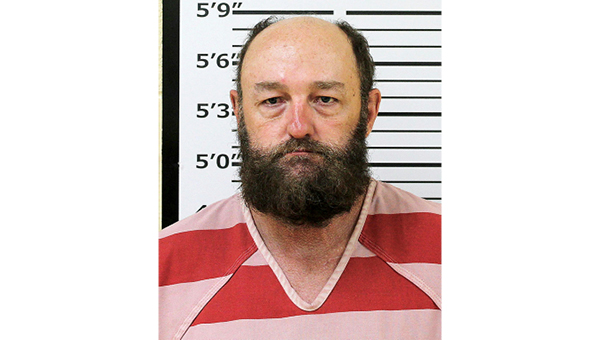Six-figure windfall could mean city tax reduction
Published 9:30 am Wednesday, April 15, 2015
Unexpected additional funding for the City of Elizabethton could lead to the completion of several projects or it could mean a reduction in the city’s property tax.
The city received a larger than expected in-lieu of tax payment from the Elizabethton Electric Department – $628,000. Because this money was not budgeted for, City Manager Jerome Kitchens said the funds haven’t been allocated for anything specific, leaving the six-figure windfall free to be used however the city wishes.
The in-lieu of tax payment increased for two reasons, Kitchens said. He attributed it to significant infrastructure improvements made to the EED’s substations, improvements that went “on the books” and figured into the in-lieu of tax payment decision.
Kitchens also said the formula used to determine the payment was found to be incorrect by the TVA and a new formula was used.
“The math we had been using, and were audited on, was determined to be incorrect by the TVA,” Kitchens said. “We changed the formula as instructed to what was appropriate, which gave greater weight to the city.”
That greater weight equals more than $600,000 in extra revenue each year.
For this year, Kitchens recommended $104,000 of the money be put into the debt service fund as a credit for money that was used to purchase the old Ritchie’s Furniture warehouse to convert to the new Elizabethton Police Department headquarters in a few years.
As for the rest of the money, he presented a list of one-time projects that had been requested by city department leaders. The list totaled $644,000, but Kitchens recommended spending no more than $500,000.
The list was not in a prioritized order, but the five most pressing purchases, according to Kitchens, would be a backflow preventer for the sprinklers at the Elizabethton/Boys and Girls Club for $7,500; new radios for the Elizabethton Police Department for $100,000, the Elizabethton Fire Department for $66,000 and the Street Department for $10,000 and to replace wiring in traffic signals for $10,000.
The replacement radios topped the list of concerns, Kitchens said.
“One of the major concerns during an emergency is communication,” he said. “We haven’t upgraded our radios in a long time, and when you see the price, you can understand why. It is so expensive to do the radios, we have to do it or we have to consciously say we aren’t going to.”
With the current EFD radios, EFD Chief Barry Carrier said there were some homes in the far end of the Milligan Highway where firefighters inside structures could not communicate back to those in the stations.
“We have tried different things and nothing has improved this,” Carrier said. “It is a major focus for us that we are able to communicate across town. Right now, we can’t guarantee we can hear a firefighter if he is in one of those buildings at the far end of Milligan and he needs help. That is a major concern for us.”
By upgrading the radios, three goals would be completed, Kitchens said. The departments would be able to communicate with each other, between departments and with other agencies at an improved rate.
While council was discussing the priorities for the list of projects, Mayor Curt Alexander asked council to consider another option for the increase in funding: lowering the property tax rate. Two years ago, council raised the property tax rate to $1.82 per $100 of assessed value to cover funding shortfalls and to allow for additional street paving.
“We have the opportunity before us to allocate this extra revenue,” Alexander said. “Should we give a break to the taxpayers? We have been hammering them with rate increases and we always said we could lower the taxes if we get more money.”
The additional $600,000 equals around 24 cents of property taxes, Alexander said. He suggested waiting to fund the projects because the extra revenue will be recurring each year. The proposed decrease was 3 or 4 cents on the property tax rate, which would equal around $8 annually on a $100,000 property, Alexander said.
“I’m just throwing that back for consideration,” Alexander said. “We increased because we didn’t have the money before and now we do. We don’t have to spend everything we’ve got at once.”
Kitchens informed Alexander any decreases in property taxes would have to come from a recurring expense, not a one-time expense such as those submitted for consideration.
If that proposal was to become part of the proposed 2015-2016 budget, he said, then the cuts would need to be made from a recurring area.
The proposed budget also included cuts to funding for economic development, or Carter County Tomorrow. In the current budget, the city’s utilities paid a total of $94,000 a year to CCT. Of this, $45,000 came from the EED’s budget and $49,000 came from the water fund.
The amount in the proposed budget was reduced to $35,000 and was to come from the city’s general fund and not the utilities.
“We have a fundamental need to maintain an economic development board and an economic development presence,” Kitchens said. “We need to have the city and the county working together.
“Looking at the utility budgets, we were having a hard time justifying this amount coming from those funds,” he said. “We are not saying it is not appropriate to fund economic development, but is that where the funding needs to go? Our goal is to have some funding for economic development; we are just not sure if that is enough for what you want to do.”
Councilman Richard Tester, who is also the chairman of the CCT board, told council the board is prepared to make changes and work with the budget it is given to be more viable than in the past. Currently, CCT has one employee, President Tom Anderson, who oversees an umbrella of organizations such as the Elizabethton/Carter County Chamber of Commerce, the Workforce Development Complex, the Carter County Tourism Council and the Industrial Development Board.
“From $94,000 to $35,000 is a pretty significant cut,” Tester said.
One option the city is considering is join a regional economic development effort with surrounding counties. The idea was something to consider, Tester said, but it should be added to the current economic development plan – not take away from it.
The next budget workshop will beThursday at noon to discuss the utility funds.





